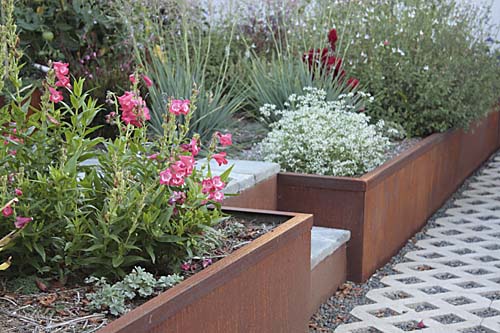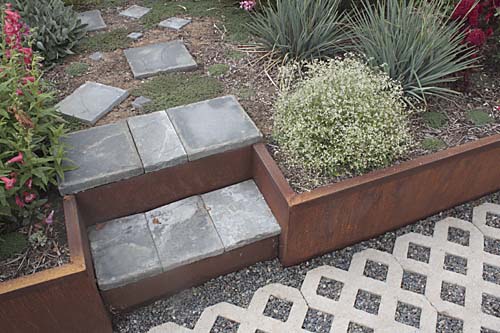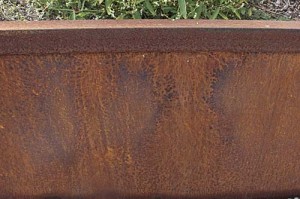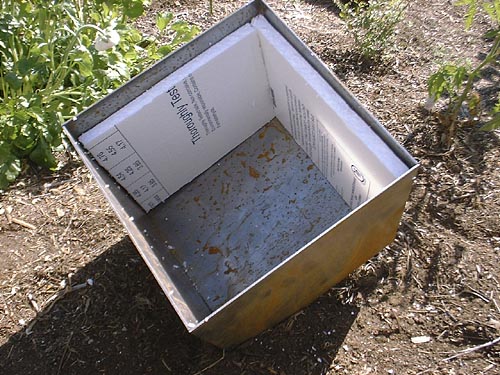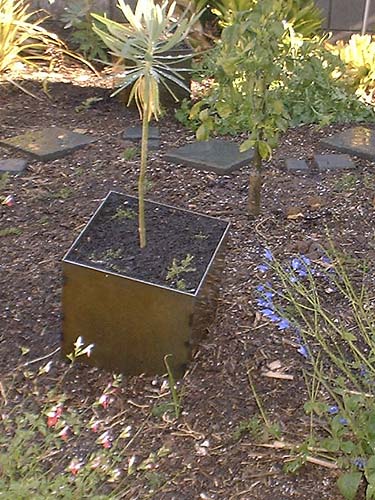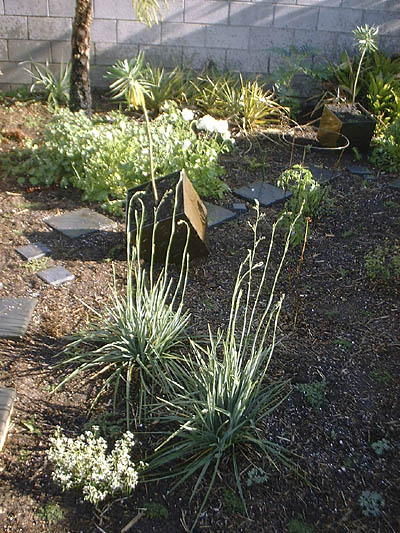Picasso and on occasion other artists have been credited with the quote that goes something like, “Good artists copy, great artists steal.”
Left: Garden at the Getty Center, Los Angeles [ source ]
The garden designed by Robert Irwin at the Getty Museum in Los Angeles has both received raves and been the topic of rants. After my visits there I’m torn somewhere in between. There are things I like about it, and there are things that seem like missed opportunities or inappropriate choices.
One of the things I really like is its use of sheets of steel for retaining walls. (You can see it in the foreground and middle-ground in this picture.)
Each material that you use in a garden–whether it be wood or stone or steel–has its own personality. I particularly like the warm brown color that that steel ages to, as well as the industrial vibe that it brings.
While it probably doesn’t rise to the Picasso’s level of theft, using sheet steel for retaining walls is an idea I’ve incorporated into my own garden. Two sides of the raised bed I put in last fall use the material.
My gardening budget is nothing like the Getty Museum’s, so instead of inch-thick material I used 11-gauge sheets (just shy of 1/8 inch thick). Also, since steel is heavy stuff, thinner sheets don’t require heavy equipment and can be handled by two people. I welded inch-and-a-half angle iron to the top edges, both to give it extra rigidity to help hold back the soil and to give my scrawny little sheets some visual heft.
Over eight months the walls have taken on a warm patina and are almost as alive as the plants in the bed.
I don’t consider myself to be mainly swayed by practicality over aesthetics. Since steel rusts and degrades over time, using it for a retaining wall is probably a less durable option than using other materials. Still, as far as the longevity of the steel is concerned, I’m encouraged by a scrap that I’ve had outdoors for the last ten years. When I cut into it recently the interior was pristine and shiny. Only the outer shell showed any signs of rust. Of course, steel that’s in constant contact with the ground and moisture–like my garden retaining wall–will degrade quite a bit faster.
We’ll see whether this is a five-year solution or one that will outlive me.


